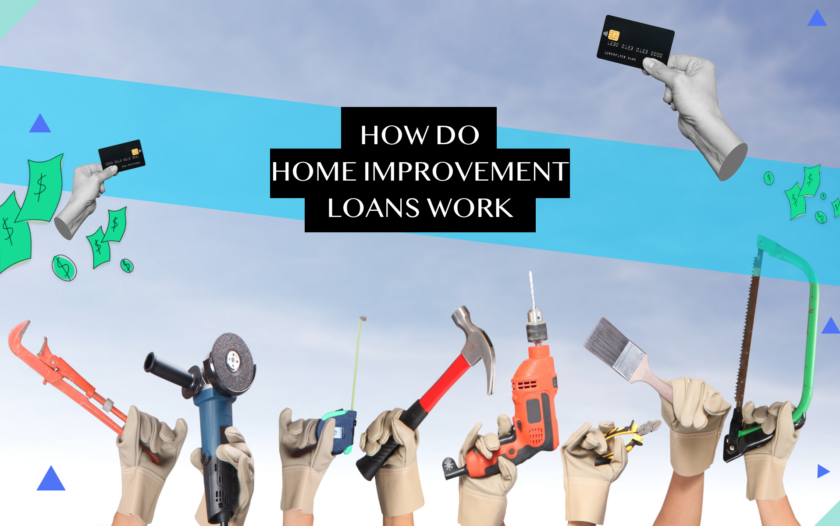Home Improvement Loan – Everything You Need To Know
About Trevor
Trevor Mahoney is a financial services writer and content creator based out of Los Angeles, California. He holds a Bachelors of Science in Finance from Santa Clara University. In his free time, he enjoys hiking and lounging on the beach.
Read full bio
At a Glance
Trying to build the house of your dreams? Whether that is more in the style of Barbie or Frank Lloyd Wright? Or maybe something in between? A home improvement loan can finance repairs or renovations to your home. There are two main types of home improvement loans: secured and unsecured. Secured loans are backed by collateral, such as your home, while unsecured loans are not. There are a variety of home improvement loans available, including personal loans, home equity loans, and HELOCs. Each type of loan has its own advantages and disadvantages, so it’s important to choose the one that’s right for your needs.
Before applying for a home improvement loan, it’s important to get your credit score in order. Most lenders will require a good credit score to qualify for a loan. You can also shop around and compare rates from multiple lenders to get the best deal. Let’s discover everything you need to know about home improvement loans.
In this article, you’ll learn:
- What is a home improvement loan
- How do home improvement loans work
- Types of home improvement loans
- Pros and cons of home improvement loan
- Credit score required for home improvement loan
- Where to get a home improvement loan
- How to choose the right home improvement loan
- Alternatives to home improvement loans
- FAQs
$22,000
The average cost of a single home renovation project.


What is a home improvement loan?
A home improvement loan can be used to finance repairs or renovations to your home. Home improvement loans can be used for a variety of projects, such as:
- Remodeling your kitchen or bathroom
- Adding a new deck or patio
- Replacing your roof or windows
- Making energy-efficient upgrades
- Repairing damage from a storm or other disaster
How do home improvement loans work?
Home improvement loans work like any other type of loan. You borrow money from a lender and agree to repay it with interest over a period of time. The interest rate and loan term will vary depending on the lender and your credit score.
1. Secured loan
A secured loan is backed by collateral, such as your home. If you default on the loan, the lender can foreclose on your home to recoup their losses. Secured loans typically have lower interest rates than unsecured loans.
2. Unsecured loan
An unsecured loan is not backed by collateral. If you default on the loan, the lender has no recourse but to sue you. Unsecured loans typically have higher interest rates than secured loans.
Types of home improvement loans
1. Personal loan
A personal loan is a general-purpose loan that can be used for any purpose, including home improvement. Personal loans are typically unsecured, so they may have higher interest rates than other types of home improvement loans.
Find and compare the best loan options.
Use the filters below to refine your search

Sorry, we didn’t find any options that meet your requirements. Please try modifying your preferences.
Congratulations! You’re close to seeing your offers!
Please take a second to review the details you shared earlier
Sorry, we didn’t find any options that meet your requirements. Please try modifying your preferences.
2. Home equity loan
A home equity loan is a secured loan that uses your home equity as collateral. Home equity loans typically have lower interest rates than personal loans, but they can be riskier if you default.
Learn more: How Does a Home Equity Loan Work?
3. HELOC
A HELOC, or home equity line of credit, is a secured loan that allows you to borrow money against your home equity as needed. HELOCs have variable interest rates, meaning your monthly payments can fluctuate over time.
Pros and cons of home improvement loan
| Pros | Cons |
|---|---|
| – Can finance a variety of home improvement projects | – Can be expensive, especially if you have a bad credit score |
| – Can help you improve the value of your home | – May require you to put up your home as collateral |
| – Can be a good way to finance a large project that you can’t afford to pay for out of pocket | – Can be difficult to qualify for, especially if you have a lot of debt |
Credit score required for home improvement loan
The credit score needed for a home improvement loan will vary depending on the lender and the type of loan. However, most lenders require a credit score of at least 620 to qualify for a secured loan. Unsecured loans may require a higher credit score, such as 670 or higher.
Where to get a home improvement loan?
You can get a home improvement loan from various lenders, including banks, credit unions, and online lenders. It’s important to shop around and compare rates from multiple lenders to get the best deal.
How to choose the right home improvement loan
When selecting a home improvement loan, there are a few things to keep in mind:
- Interest rate: The interest rate is the amount of money you’ll pay to borrow. A lower interest rate will save you money in the long run.
- Loan term: The loan term is the length of time you have to repay the loan. A longer loan term will result in lower monthly payments, but you’ll pay more interest over the life of the loan.
- Fees: Some lenders charge fees for home improvement loans. Be sure to ask about all fees before you apply for a loan.
Alternatives to home improvement loans
1. 0% APR credit card
If you have a good credit score, you may be able to qualify for a 0% APR credit card. This type of credit card allows you to borrow money at 0% interest for a promotional period, typically 12 to 18 months. This can be a good option for small home improvement projects.
2. Cash-out mortgage refinance
If you have a lot of equity in your home, you may be able to refinance your mortgage and take out cash. This type of refinance is called a cash-out refinance. You can use the cash to finance your home improvement project.
3. Government loans
There are several government loans available to help homeowners finance home improvement projects. For example, the Federal Housing Administration (FHA) offers a 203(k) loan, which can be used to finance repairs and renovations to a home.
FAQs
No, a home improvement loan must be used for repairs or renovations to your home. You cannot use a home improvement loan to pay for other expenses, such as debt consolidation or a vacation.
No, a home improvement loan is different from a mortgage. A mortgage is a loan that you use to purchase a home. A home improvement loan is a loan you use to finance repairs or renovations to your home.
You can use your home improvement loan to finance a variety of home improvement projects, such as remodeling your kitchen or bathroom, adding a new deck or patio, replacing your roof or windows, or making energy-efficient upgrades.
The rates on home improvement loans will vary depending on the lender, the type of loan, and your credit score. However, interest rates are typically higher on home improvement loans than on mortgages.
A HELOC can be a good option for home improvement if you need to borrow a large amount of money and have a good credit score. However, it’s important to understand the risks involved before you take out a HELOC. For example, if you default on the loan, the lender can foreclose on your home.
The average length of a home improvement loan is 5 to 7 years. However, the loan term can vary depending on the lender and the amount of money you borrow.









